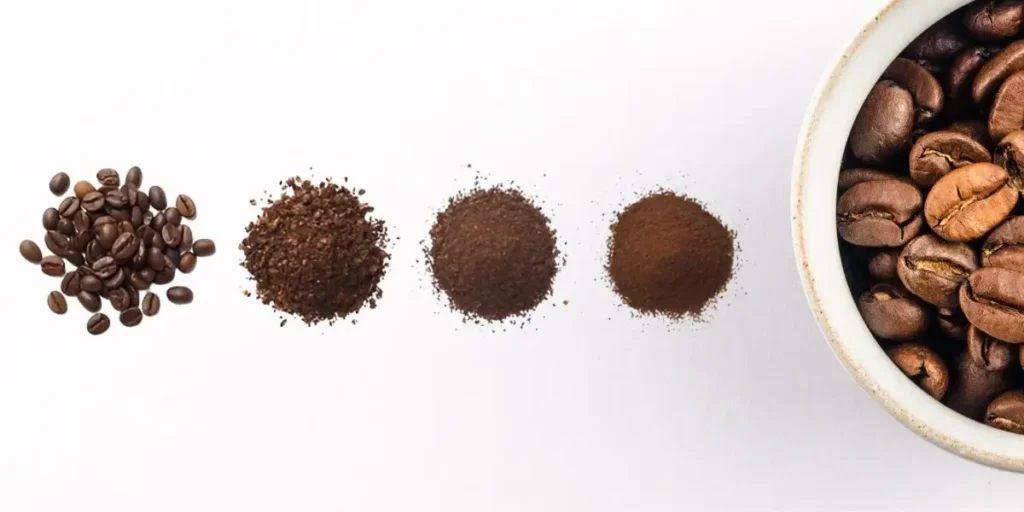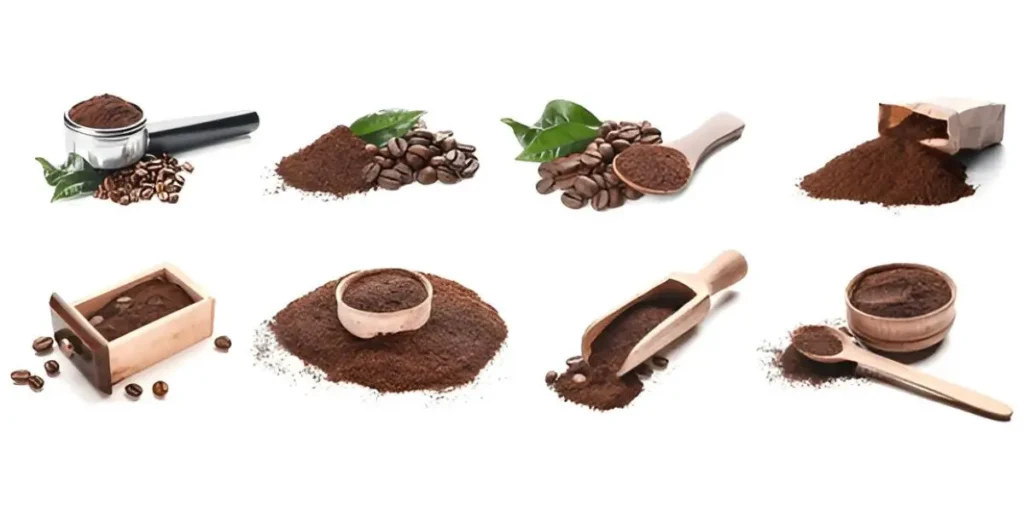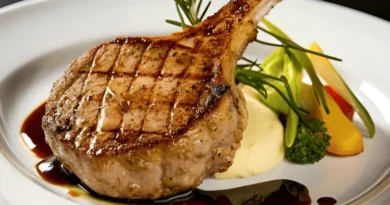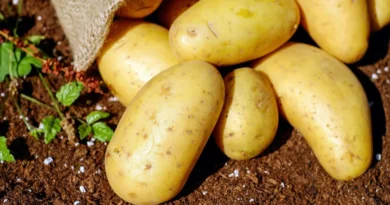How to Choose the Right Coffee Powder for Your Taste
Choosing the right coffee powder can significantly elevate your coffee experience. With numerous options available, understanding your taste preferences is crucial.
Whether you’re a seasoned coffee connoisseur or just starting to explore the world of coffee, selecting the perfect blend can be daunting. This guide will walk you through the process of finding the ideal coffee powder that suits your taste buds.
By considering your taste preferences, you can narrow down the options and make an informed decision. This ensures that you enjoy the best coffee powder tailored to your liking.
Understanding Coffee Beans: The Foundation of Great Coffee Powder
The foundation of great coffee powder lies in understanding the type of coffee beans used. Coffee beans are the backbone of any coffee drink, and their characteristics significantly influence the flavor profile of your coffee powder. Whether you’re a casual coffee drinker or a connoisseur, knowing the basics of coffee beans can elevate your coffee experience.
Coffee beans come in various types, but the two main categories are Arabica and Robusta. The difference between these two types is not just in their taste but also in their cultivation, processing, and usage in coffee blends.
Arabica vs. Robusta: Taste Differences and Characteristics
The debate between Arabica and Robusta is ongoing among coffee enthusiasts. Arabica is known for its mild and nuanced flavor, while Robusta is often associated with a bolder and harsher taste.
Arabica: Smooth and Complex Flavors
Arabica beans are renowned for their smooth and complex flavors. They are grown at high altitudes and require careful cultivation, which contributes to their distinct taste profile. Arabica coffee powder is ideal for those who prefer a subtle coffee flavor.
Robusta: Strong and Bold Profiles
Robusta beans, on the other hand, have a strong and bold flavor profile. They are easier to grow and more disease-resistant than Arabica, making them a popular choice for instant coffee and espresso blends.
Single Origin vs. Blends: Which is Right for You?
When choosing coffee powder, you also need to decide between single-origin and blended coffee beans. Single-origin coffee beans come from a single region or farm, offering a distinct flavor profile characteristic of that area. Blends, however, combine beans from multiple regions to create a balanced flavor.
| Coffee Bean Type | Flavor Profile | Cultivation Difficulty |
|---|---|---|
| Arabica | Smooth, Complex | High |
| Robusta | Strong, Bold | Low |
| Single Origin | Distinct, Regional | Varies |
| Blends | Balanced | Varies |
As
“The type of coffee beans you choose can dramatically change your coffee experience.”
, understanding the differences between Arabica and Robusta, as well as single-origin and blends, is crucial in selecting the right coffee powder for your taste preferences.
Decoding Coffee Roast Levels
The roast level of your coffee powder can significantly impact its flavor profile. Coffee roast levels are a crucial factor in determining the taste of your coffee, and understanding the differences is key to choosing the right coffee powder for your preferences.
Coffee beans can be roasted to various levels, ranging from light to dark. Each roast level brings out unique characteristics in the coffee. As noted by coffee connoisseurs, “The roast level is not just about the color; it’s about the flavor profile it unlocks.” Understanding these differences is essential to buying coffee powder that suits your taste.
Light Roasts: Bright and Acidic Profiles
Light roasts are roasted for a shorter period, preserving more of the coffee’s natural acidity and flavor. They have a bright, acidic taste and are often described as having fruity or floral notes. If you prefer a coffee that’s vibrant and full of character, light roasts might be the perfect choice.
Medium Roasts: Balanced Flavor Profiles
Medium roasts offer a balanced flavor profile, sitting between the brightness of light roasts and the richness of dark roasts. They provide a smooth, well-rounded taste that appeals to a wide range of coffee drinkers. Medium roasts are ideal for those who want a versatile coffee that works well with various brewing methods.
Dark Roasts: Bold and Rich Characteristics
Dark roasts are roasted for a longer period, resulting in a bold, rich flavor. They have a deeper color and a more pronounced taste, often with notes of chocolate or caramel. Dark roasts are perfect for those who enjoy a robust, intense coffee experience.
How Roast Level Affects Caffeine Content
The roast level also affects the caffeine content of your coffee. Generally, lighter roasts have more caffeine than darker roasts because some caffeine is lost during the roasting process. Understanding this can help you choose a coffee powder that not only tastes great but also meets your caffeine needs.
The Importance of Grind Size in Coffee Powder

Grind size is often overlooked, but it’s a crucial element in unlocking the full flavor potential of your coffee powder. The grind size of your coffee significantly impacts the brewing process, as different brewing methods require specific grind sizes to achieve optimal extraction and flavor.
Choosing the right grind size ensures that your coffee is neither under-extracted nor over-extracted, resulting in a balanced flavor. Let’s explore the different grind sizes and their corresponding brewing methods.
Coarse Grinds: French Press and Cold Brew
Coarse grinds are ideal for French press and cold brew methods. The large grind size allows for a slow extraction process, resulting in a rich and full-bodied flavor. For French press, the coarse grind ensures that the coffee grounds don’t pass through the press, while for cold brew, it facilitates a smooth, low-acidity brew.
Medium Grinds: Drip Coffee and Pour Over
Medium grinds are suitable for drip coffee makers and pour-over methods. This grind size allows for a balanced extraction, resulting in a smooth and flavorful cup. For drip coffee, the medium grind ensures that the coffee is evenly extracted, while for pour-over, it enables a clean and nuanced extraction.
Fine Grinds: Espresso and Moka Pot
Fine grinds are perfect for espresso machines and Moka pots. The fine grind size enables a high-pressure extraction, resulting in a concentrated and rich espresso. For Moka pot, the fine grind ensures that the coffee is properly extracted, producing a bold and full-bodied flavor.
Extra Fine Grinds: Turkish Coffee
Extra fine grinds are used for Turkish coffee, where the coffee is finely ground to a powder-like consistency. This grind size allows for a very fine extraction, resulting in a strong and intense flavor.
| Brewing Method | Grind Size | Flavor Profile |
|---|---|---|
| French Press | Coarse | Rich, Full-Bodied |
| Cold Brew | Coarse | Smooth, Low-Acidity |
| Drip Coffee | Medium | Balanced, Smooth |
| Pour Over | Medium | Clean, Nuanced |
| Espresso | Fine | Concentrated, Rich |
Exploring Coffee Flavor Profiles
The diverse world of coffee flavor profiles offers a wide range of tastes and aromas to explore. Coffee flavor profiles are influenced by several factors, including the type of coffee beans, roast level, and processing methods.
Understanding Flavor Notes and Descriptors
Flavor notes and descriptors are essential in identifying and describing the taste and aroma of coffee. These descriptors can range from floral and fruity to chocolatey and nutty. Understanding these terms can help you pinpoint your preferred flavor profile.
Some common flavor descriptors include:
- Fruity: hints of citrus, berries, or stone fruits
- Floral: notes of jasmine, rose, or lavender
- Nutty: flavors reminiscent of almonds, hazelnuts, or pecans
Regional Flavor Characteristics
Coffee flavor profiles can also be significantly influenced by the region in which the coffee beans are grown. Different regions impart unique flavor characteristics to the coffee.
African Coffee Origins
Coffees from Africa are known for their bright acidity and fruity flavors, often featuring notes of blackcurrant, citrus, or wine.
Latin American Coffee Origins
Latin American coffees are often characterized by their balanced acidity and nuttiness, with flavors that include caramel, chocolate, or fruit.
Asian Coffee Origins
Coffees from Asia are typically known for their earthy and herbal notes, with flavors that can include musty, woody, or spice undertones.
Finding Flavors That Match Your Preferences
To find a coffee that matches your taste preferences, consider experimenting with different flavor profiles. You can start by trying coffees from various regions or adjusting the roast level to see how it affects the flavor.
Coffee Powder Freshness: Why It Matters
When it comes to brewing coffee, the freshness of the coffee powder is what makes all the difference. Fresh coffee powder ensures a more vibrant and flavorful cup, while stale coffee can lead to a disappointing brew.
The moment coffee beans are ground, they begin to lose their flavor and aroma due to exposure to air, moisture, and light. This is why ground coffee has a limited shelf life compared to whole coffee beans.
The Shelf Life of Ground Coffee
Generally, ground coffee remains fresh for about one to two weeks after opening, depending on storage conditions. It’s best to consume it within this timeframe for optimal flavor.
Signs of Stale Coffee Powder
Stale coffee powder can be identified by its dull aroma and taste. If your coffee lacks its usual brightness and flavor notes, it might be time to replace it.
Pre-Ground vs. Freshly Ground: Pros and Cons
Pre-ground coffee is convenient but may lack freshness. On the other hand, freshly ground coffee offers superior flavor but requires a grinder. Weighing these options will help you decide what’s best for your coffee routine.
Ultimately, understanding the importance of coffee powder freshness and how to maintain it can elevate your brewing experience, ensuring every cup is as flavorful as possible.
Organic and Specialty Coffee Powder Options
If you’re looking to elevate your coffee experience, understanding the differences between organic and specialty coffee powder is essential. Both types offer unique benefits and characteristics that can enhance your daily brew.
Benefits of Organic Coffee Powder
Organic coffee powder is grown without the use of synthetic pesticides or fertilizers, making it a more sustainable and environmentally friendly choice. This method of farming not only benefits the environment but also results in a cleaner taste, as the coffee beans are less likely to be contaminated with chemical residues.
Key benefits of organic coffee powder include:
- Environmentally friendly farming practices
- Reduced exposure to synthetic chemicals
- Potential for a cleaner, more natural flavor profile
Understanding Coffee Certifications
Coffee certifications can be a bit overwhelming, but understanding what they mean can help you make an informed decision. Certifications like Fair Trade, Rainforest Alliance, and Bird Friendly are indicators of the coffee’s quality and the ethical standards of its production.
Fair Trade Certification
Fair Trade certification ensures that coffee farmers receive a fair price for their beans, promoting equitable trade practices and improving the livelihoods of farming communities.
Rainforest Alliance Certification
The Rainforest Alliance certification is awarded to farms that meet rigorous standards for environmental sustainability and social responsibility, ensuring that coffee is produced in a way that conserves biodiversity and promotes ecosystem services.
Bird Friendly and Other Certifications
Bird Friendly certification, backed by the Smithsonian Migratory Bird Center, recognizes coffee farms that provide habitat for migratory birds. Other certifications may focus on aspects like organic farming or sustainable agriculture practices.
| Certification | Focus | Benefits |
|---|---|---|
| Fair Trade | Fair pricing for farmers | Improves farmers’ livelihoods |
| Rainforest Alliance | Environmental sustainability | Conserves biodiversity |
| Bird Friendly | Habitat for migratory birds | Promotes ecosystem services |
Is Premium Coffee Powder Worth the Price?
Premium coffee powder, often associated with specialty coffee, comes with a higher price tag due to its high-quality beans and meticulous production process. Whether it’s worth the cost depends on your personal taste preferences and values. If you appreciate the nuanced flavors and unique characteristics of specialty coffee, the investment may be justified.
When deciding, consider factors like flavor profile, production ethics, and the overall coffee experience you’re seeking. For many, the distinct taste and satisfaction derived from premium coffee powder make it a worthwhile choice.
How to Store Coffee Powder Properly
The way you store your coffee powder can significantly impact its taste and quality. Proper storage helps maintain the flavor and aroma, ensuring that every cup you brew is as good as the first.
Ideal Storage Containers
Using the right storage container is crucial. Airtight containers made of glass or ceramic are ideal because they prevent air, moisture, and light from affecting the coffee powder. Avoid containers with rubber seals that can impart flavors to your coffee.
When choosing a container, consider its size and the amount of coffee powder you have. A container that is too large may expose the coffee to more air, while one that is too small may not be practical for your needs.
Temperature, Light, and Moisture Considerations
Coffee powder is sensitive to its environment. Temperature, light, and moisture can all affect its quality. Store your coffee in a cool, dark place, away from direct sunlight and heat sources. Moisture can cause coffee to become stale or develop off-flavors, so it’s essential to keep it dry.
| Storage Factor | Ideal Condition | Effect on Coffee Powder |
|---|---|---|
| Temperature | Cool, around 60-70°F (15-21°C) | High temperatures can cause coffee to lose flavor and aroma. |
| Light | Dark or minimal exposure | Light can cause coffee to become stale and lose its flavor profile. |
| Moisture | Dry environment | Moisture can lead to staleness and the development of off-flavors. |
Freezing Coffee Powder: Good Idea or Bad Practice?
Freezing coffee powder is a debated topic. While it can help preserve freshness by preventing exposure to air, moisture, and light, it can also introduce moisture into the coffee if not done correctly. If you choose to freeze your coffee powder, use an airtight container and consider portioning it into smaller quantities to avoid repeated thawing and freezing.
Where to Buy Quality Coffee Powder
You can buy quality coffee powder from a variety of sources, each with its own unique benefits. Whether you’re a coffee connoisseur or just starting your coffee journey, understanding your options is crucial.
Local Roasters vs. Supermarket Options
Local roasters offer freshly roasted coffee beans that are ground to your specification, ensuring optimal flavor. In contrast, supermarkets provide a wide range of coffee powders, often at competitive prices. While local roasters offer quality and customization, supermarkets are convenient and accessible.
Online Coffee Subscription Services
Online coffee subscription services have gained popularity, offering the convenience of regular deliveries and the discovery of new coffee varieties. These services often partner with local roasters, ensuring that you receive high-quality coffee powder.
Reading Coffee Packaging Labels
When buying coffee powder, reading the packaging labels is essential. Key information includes:
- Roast date
- Origin and variety details
- Processing method
Roast Date Information
Look for the roast date rather than the expiration date to ensure freshness. Coffee powder is best consumed within a few weeks of roasting.
Origin and Variety Details
Understanding the origin and variety of your coffee beans can help you appreciate the flavor profile. Different regions and varieties offer unique taste characteristics.
Processing Method Information
The processing method affects the flavor. Common methods include washed, natural, and honey processing, each imparting distinct flavors to the coffee.
| Source | Quality | Convenience |
|---|---|---|
| Local Roasters | High | Moderate |
| Supermarkets | Variable | High |
| Online Subscription Services | High | High |
Conclusion: Finding Your Perfect Coffee Powder Match

Now that you’ve explored the world of coffee powder, you’re equipped to make an informed decision. Choosing the best coffee powder involves understanding your taste preferences, coffee beans, roast levels, grind size, and flavor profiles. Arabica coffee powder, known for its mild and nuanced flavor, is a popular choice among coffee connoisseurs.
To find your perfect match, consider the roast level that suits your taste buds. Whether you prefer the bright acidity of light roasts or the rich flavors of dark roasts, there’s a coffee powder out there for you. Experiment with different grind sizes to optimize your brewing method, and don’t be afraid to try various flavor profiles until you find the one that resonates with you.
By considering these factors and exploring different options, you’ll be able to find the best coffee powder that suits your taste preferences. Whether you’re a coffee aficionado or just starting your coffee journey, the perfect cup is within reach.
FAQ
What is the difference between Arabica and Robusta coffee powder?
Arabica coffee powder is known for its smooth and complex flavors, while Robusta has a stronger and bolder taste. Arabica is generally considered to be of higher quality and is more expensive than Robusta.
How do I choose the right roast level for my coffee powder?
The roast level of your coffee powder depends on your personal taste preferences. Light roasts are bright and acidic, while dark roasts are bold and rich. Medium roasts offer a balanced flavor profile.
What grind size is best for my brewing method?
The grind size of your coffee powder significantly impacts the brewing process. Coarse grinds are best for French press and cold brew, while fine grinds are best for espresso and Moka pot. Medium grinds are suitable for drip coffee and pour-over.
How can I ensure the freshness of my coffee powder?
To maintain the freshness of your coffee powder, store it in an ideal container, away from temperature fluctuations, light, and moisture. You can also consider buying freshly roasted and ground coffee or grinding your own coffee beans.
What are the benefits of buying organic coffee powder?
Organic coffee powder is grown without synthetic pesticides or fertilizers, making it a more sustainable and environmentally friendly option. It may also have a more distinct flavor profile due to the farming practices used.
How do I read coffee packaging labels to ensure I’m getting high-quality coffee powder?
When reading coffee packaging labels, look for roast date information, origin and variety details, and processing method information. This will help you understand the quality and flavor profile of the coffee powder.
Can I freeze coffee powder to preserve its freshness?
Freezing coffee powder can be a good way to preserve its freshness, but it’s essential to store it in an airtight container to prevent moisture and other flavors from affecting the coffee. However, freezing may not be necessary if you consume your coffee powder within a few weeks.
What is the best way to store coffee powder to maintain its flavor and aroma?
To store coffee powder properly, use an ideal storage container, keep it away from temperature fluctuations, light, and moisture, and consider storing it in a cool, dark place.
Is premium coffee powder worth the price?
Premium coffee powder is known for its high-quality beans and distinct flavor profiles. Whether it’s worth the price depends on your personal taste preferences and budget. If you’re looking for a unique and high-quality coffee experience, premium coffee powder may be worth considering.
Where can I buy quality coffee powder?
You can buy quality coffee powder from local roasters, supermarkets, and online coffee subscription services. When buying online, look for services that provide freshly roasted and ground coffee, and check the packaging labels for roast date information and other details.









